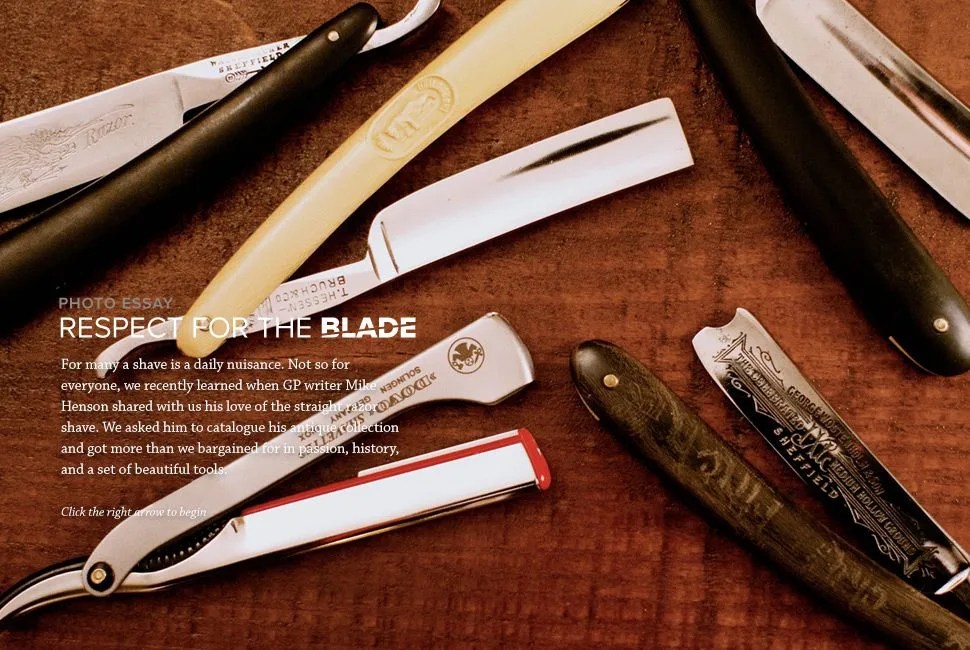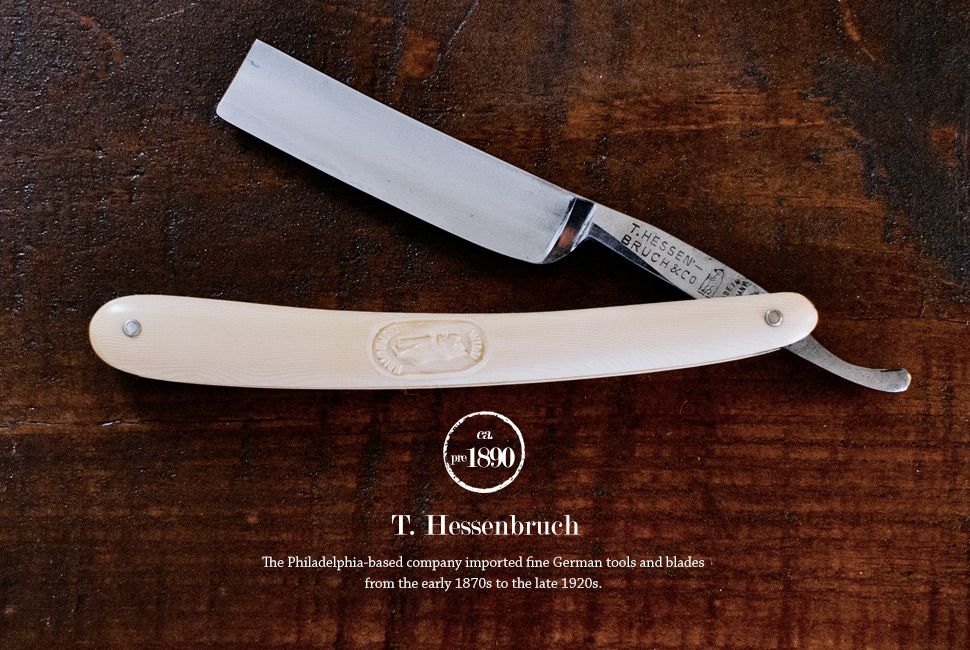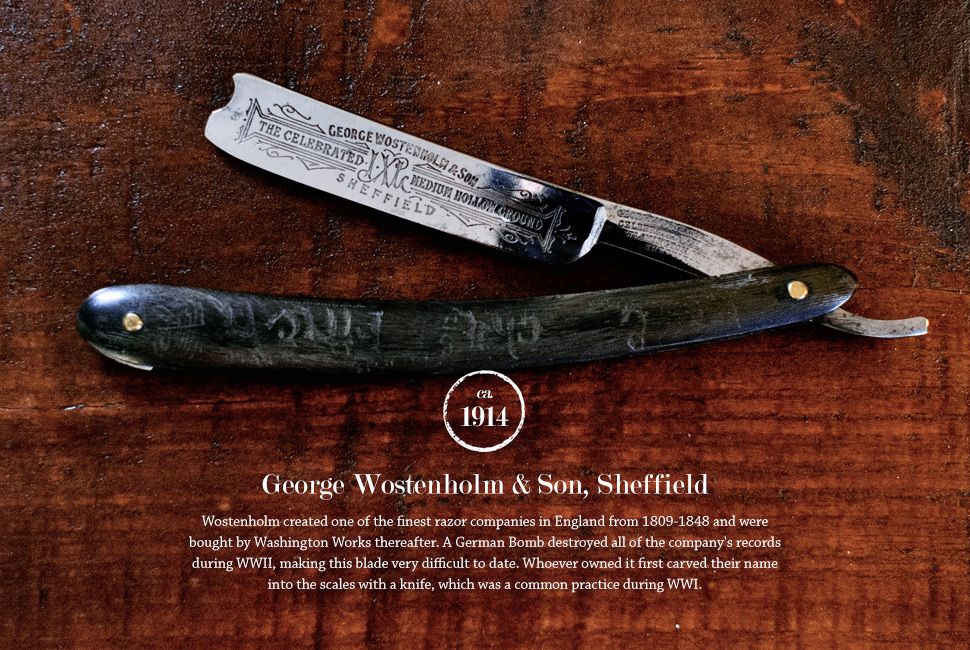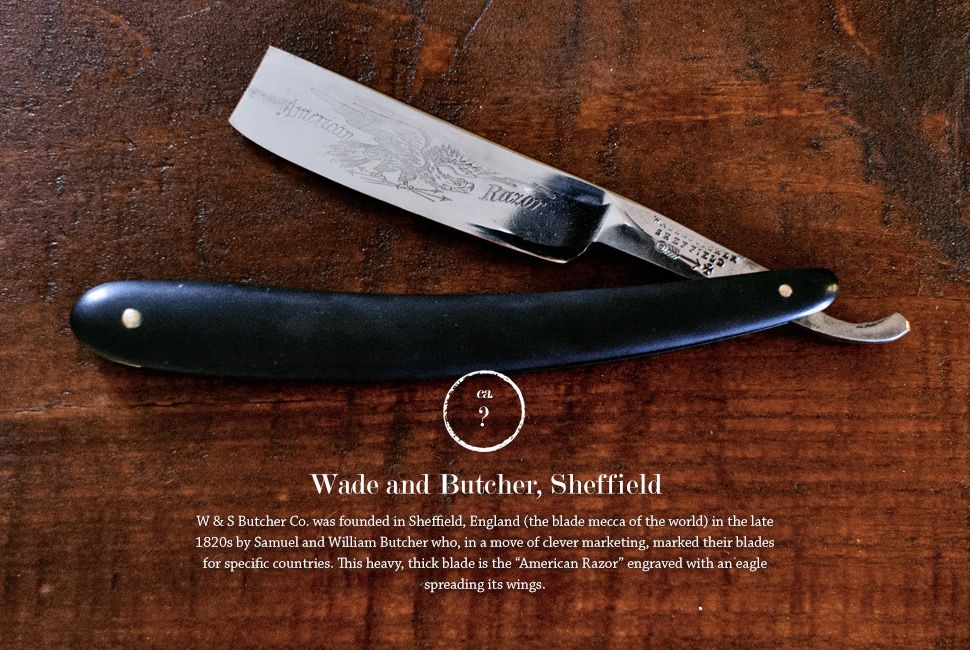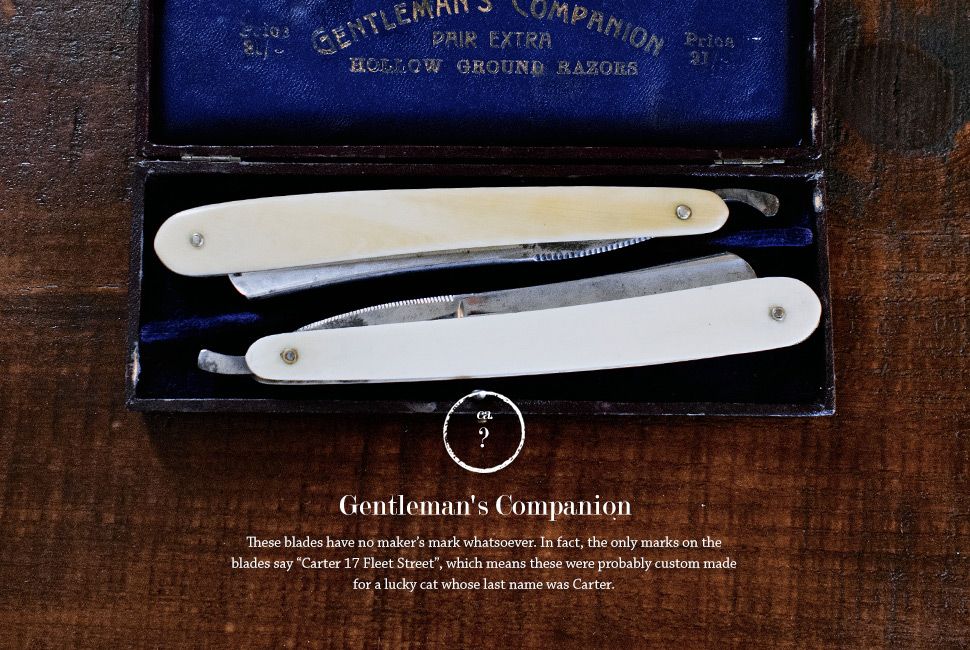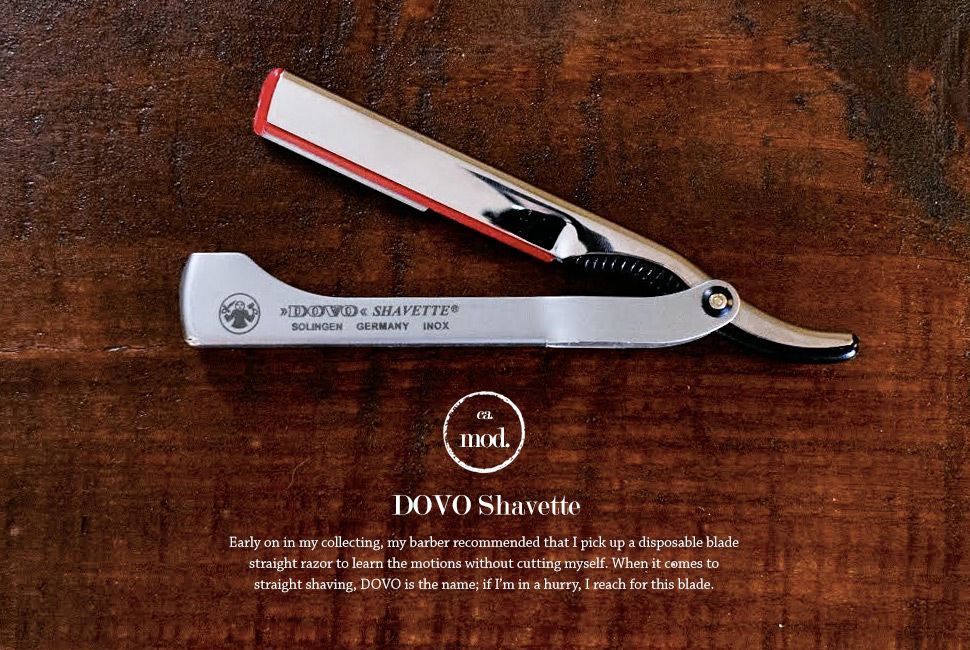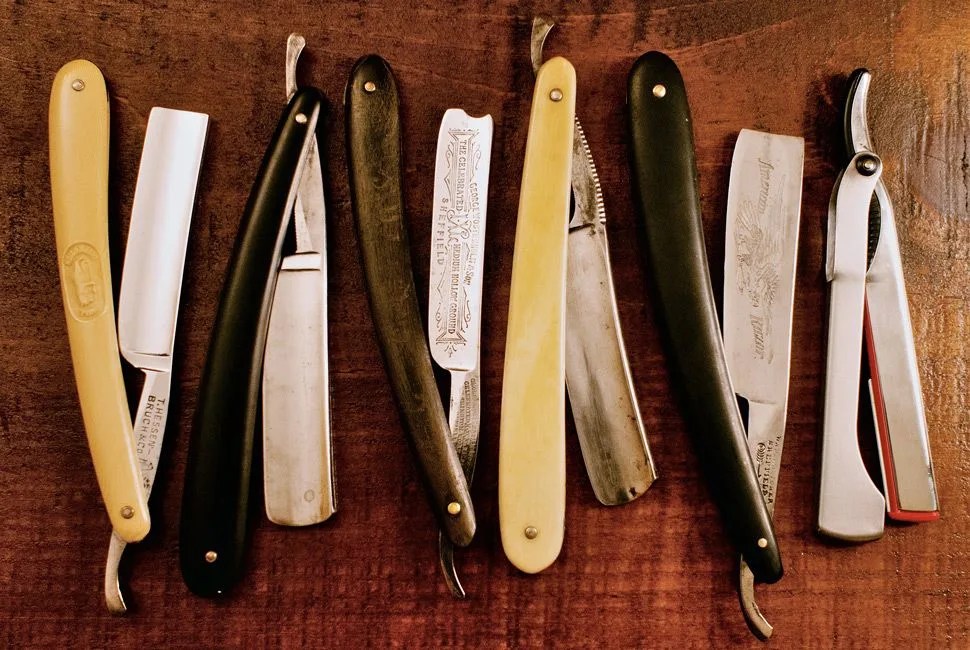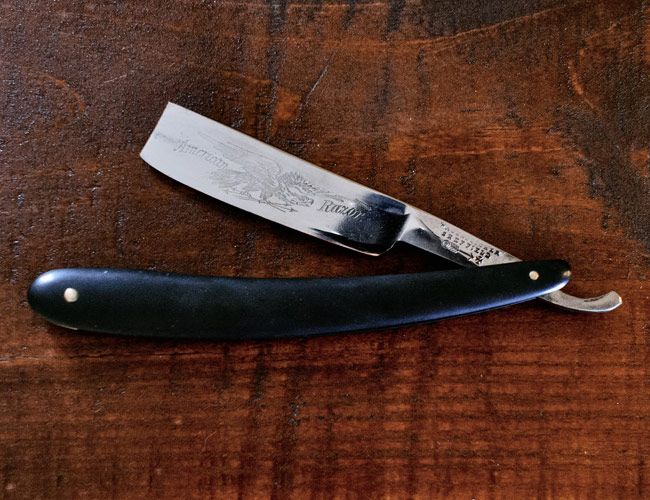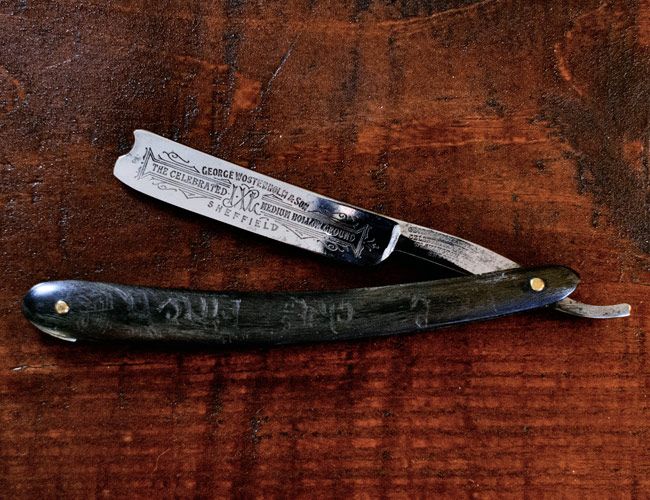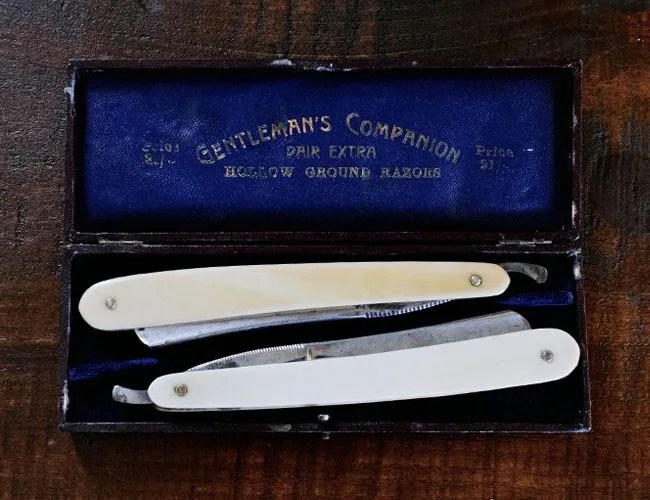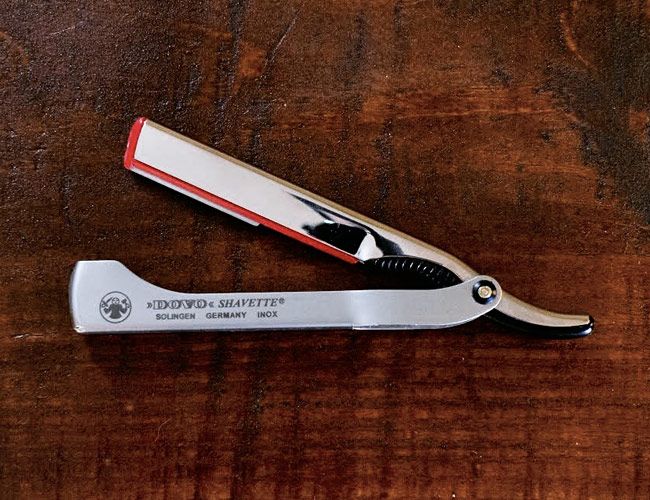8 photos
When I was nineteen, my dad gave me a pair of extra hollow-ground straight razors in a small box marked “Gentleman’s Companion”. Having been brought up with an appreciation for the finer rituals a man performs (shoe shining, woodworking, shaving, etc.), I knew immediately what they were. I did not, however, know how to use these razors, how to sharpen them, how to properly run them across a strop. Basically, I was unsure on how to not slit my own throat during my first shave attempt. I took the razors to my barber, who showed me how to hone, how to strop, and how to glide the razor across my skin, leaving behind nothing but silken bliss. I remember standing in the barbershop saying impatiently, “Okay, I get it. Now let me try.” The second the razor touched my skin, I cut my damn face. And I mean I cut it abominably. My barber, after shoving styptic powder into my cut (I cried), smiled and said, “The first rule of straight shaving is that you learn to respect the blade, or it’ll cut you.”
For the past eight years I’ve been developing my skill in straight shaving, which encompasses everything from blade maintenance to skin preparation to post-shave skincare. I’ve also added to my collection of razors, learning which blades are worth buying, which can be restored to a “shave-ready” condition and which are better left in the glass case at the antique shop (which, unfortunately, is most of them).
Over time I’ve found that straight shaving isn’t for everyone. If you prefer to shave quickly in the shower with your anti-fog mirror and aerosol shaving cream, then you’re not ready for this. No offense, but you won’t respect the blade, and it’ll cut you. But if you’re the kind of man who’s willing to wake up ten minutes earlier each day so that you can enjoy the art of making yourself presentable to the world, then straight shaving may be worth a look. I fall into the latter camp, and I’m not leaving. Here are the blades I’ve collected — and learned to respect — over the years.
MORE GROOMING GOODS 5 Best Face Scrubs for Men | Beard Trimmers | Harry’s Shave Club
J. R. Torrey
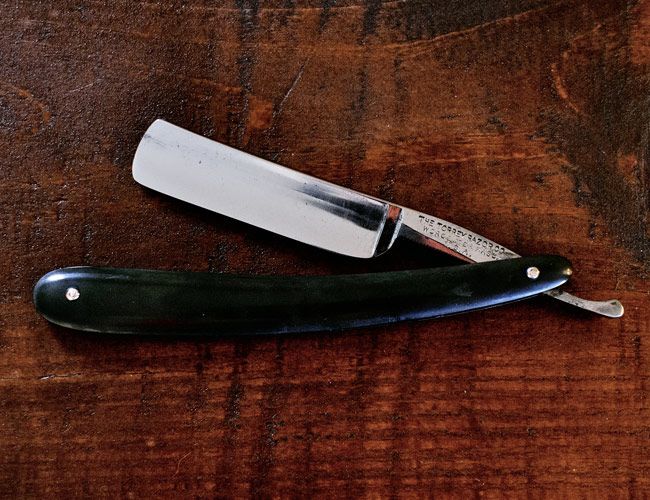
The J.R. Torrey Razor Company was in business from the late 1850s to 1963. After 20 years of importing their blades from Sweden and England the company began making their own blades right here in America in the 1870s. Unfortunately the Torrey family put too much faith in the straight razor, and by the end of World War I, most of America had moved on to safety blades; the company never recovered. This blade dates right around the early 1920s and is by far the sharpest blade I’ve ever owned; not bad for a 95-year-old piece of American steel that cost $10 at an antique shop.

